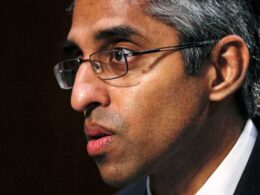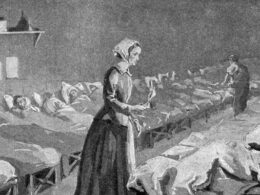BaltimoreFishBowl
By Laura Stewart
January 17, 2022
In response to staffing shortages and the recent surge in COVID-19 cases, non-clinical employees at Johns Hopkins Medicine will be reassigned to take on patient care support roles, according to an email from Robert Kasdin, senior vice president and chief operating officer of Johns Hopkins Medicine, to all staff.
Only employees who volunteer to work in a COVID-19 ward will be assigned there, the email says, and staff members can provide their preferred reassignment location, dates, and times.
Non-clinical employees will not take on direct patient care or bedside roles, said the health system’s spokesperson, Kim Hoppe, in a statement released Monday.
They are “intended to take some of the non-clinical needs off of our clinical team,” Hoppe said.
“Someone might be assigned to tasks such as supporting a stockroom, housekeeping, transporting a patient upon discharge, directing traffic, among others, for a few hours each week,” she said.
The redeployment of staff is part of a crisis response plan that was developed long before the COVID pandemic, Hoppe added, in case of emergencies that may impact staffing such as severe weather.
The announcement comes as hospitals throughout Maryland are overwhelmed by the omicron variant and healthcare labor shortages.
Hospitals are struggling to fill positions as healthcare workers are getting sick from COVID-19, experiencing burnout, and leaving for higher-paying positions.
Within the last few weeks, several hospitals in Maryland have declared a “disaster,” including the Baltimore Washington Medical Center , two hospitals in the University of Maryland Upper Chesapeake Health network, St. Joseph Medical Center in Towson, and Johns Hopkins Bayview Medical Center .
By moving to crisis mode, hospitals can implement special protocols such as delaying non-urgent surgeries to preserve bed capacity, redeploying staff, and changing the number of nurses per patient.
Maryland, its counties, and universities have recently taken steps to address the staffing shortages.
In December, Governor Hogan announced $100 million in funding to ramp up hospital and nursing home staffing.
Earlier that month, Hogan introduced emergency legislation that would allow for provisions such as giving nursing students more responsibility, bringing back retired nurses, and permitting nurses licensed in other states to work in Maryland.
Howard County Executive Calvin Ball last week announced that the county would allocate $2 million in American Rescue Plan Act funding to Howard County General Hospital, which experienced a 411% increase in the number of patients hospitalized for COVID19 from mid-December to early January.
The University of Maryland in November said that the university would allow nurses to graduate early to head to the pandemic front lines.
And in early December, the University of Maryland Medical System announced a $5.1 million initiative to recruit nurses from the state’s community colleges.
The omicron variant exacerbated a healthcare labor shortage that was already putting pressure on U.S. hospitals.
The U.S. Bureau of Labor Statistics that the healthcare sector lost nearly half a million workers since February 2020.
In September, the American Nurses Association wrote a letter the U.S. Department of Health and Human Services to declare the nurse staffing shortage a national emergency, citing the pandemic’s exacerbation of “chronic nursing workforce challenges that have persisted for years.”
As Maryland’s healthcare staffing shortages continue, the number of people hospitalized for COVID in the state remains above 3,000.
The number of hospitalizations reached an all-time high of 3,462 patients on Tuesday, dipping to 3,363 patients as of Friday.
Over the last seven days, state officials have newly reported the COVID-related deaths of 435 Marylanders.
In the email to Johns Hopkins Medicine staff, Kasdin said that he volunteered as part of the initiative this week.
“On Monday I delivered central supplies to clinical departments around JHH and on Tuesday I worked in patient transport,” he wrote.
“Throughout my shifts I felt the enormous satisfaction of supporting our colleagues and our patients,” he wrote in the email, “I have consistently believed that serving the missions of JHM is a privilege and that has never been truer than during my two shifts.”
This story has been updated to include a statement from Johns Hopkins Medicine.
Originally published at https://baltimorefishbowl.com on January 17, 2022.
Names cited
Robert Kasdin, senior vice president and chief operating officer of Johns Hopkins Medicine
Howard County Executive Calvin Ball
Baltimore Washington Medical Center , two hospitals in the University of Maryland Upper Chesapeake Health network, St. Joseph Medical Center in Towson, and Johns Hopkins Bayview Medical Center .












